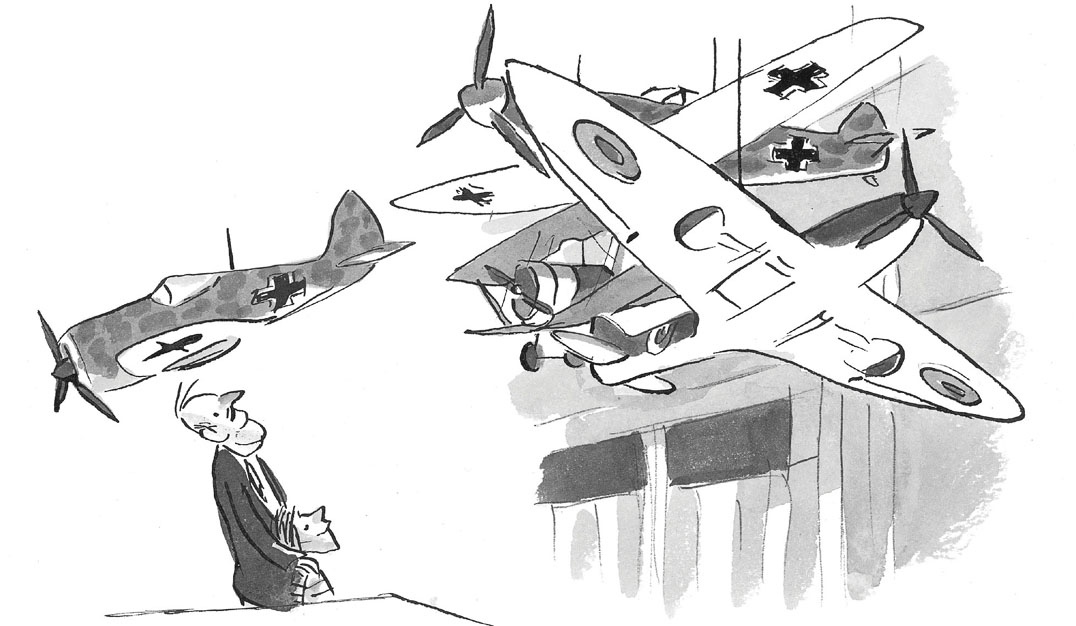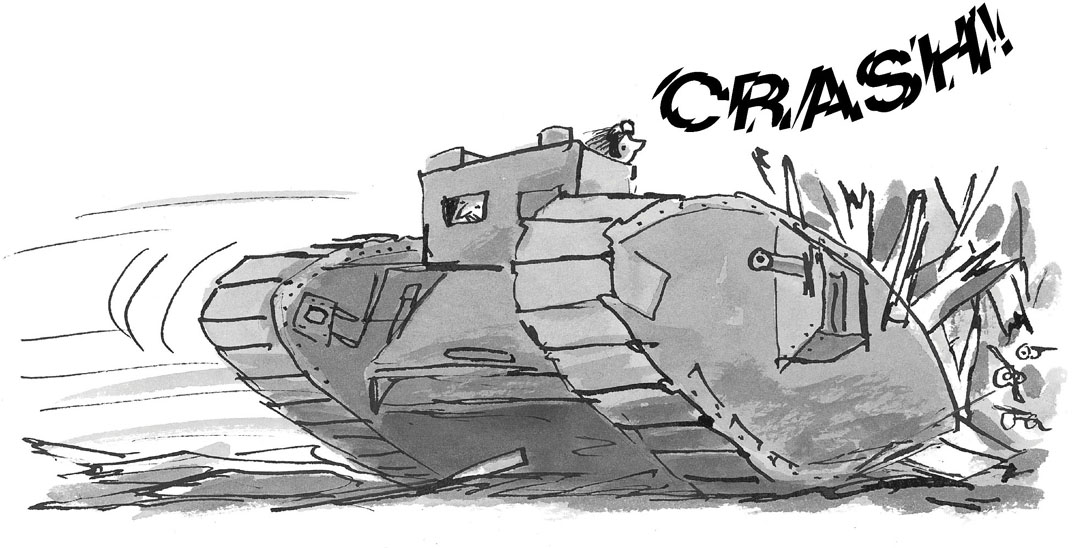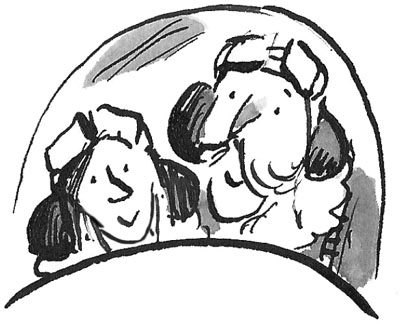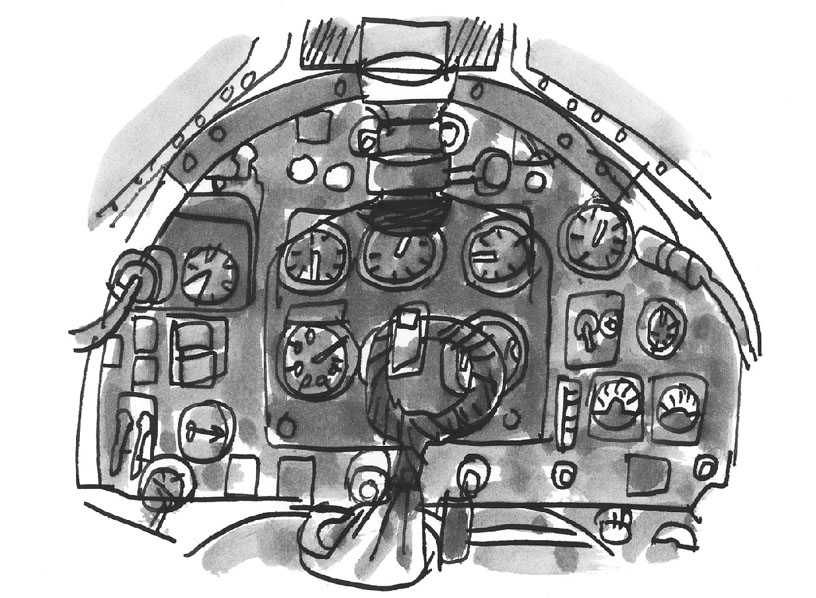55
Driving a Tank
Jack and his grandfather raced down the staircase and into the Great Room of the museum where the aircraft were suspended from the ceiling.
The fighter planes had been repaired since the pair’s last visit. The Spitfire had been restored to her former glory.

On the wall was a winch, and the two worked double quick to bring the warbird back down to earth.
In a nearby glass cabinet stood a display of RAF pilots’ flying gear on mannequins. Thinking fast, they pushed an old World War I cavalry cannon, that in its day would have been drawn by a horse, towards the cabinet. The cannon smashed the glass.
As if they had been scrambled, the pair raced to put on the flying gear.
The boy checked his reflection in the next glass case along –
Goggles – CHECK
Helmet – CHECK
Flying suit – CHECK
Scarf – CHECK
Brown leather jacket – CHECK
Boots – CHECK
Gloves – CHECK
Parachute – CHECK

They had their flying suits on.
The Spitfire was on the ground.
But amidst all the excitement, the pair had forgotten something.
Something big.
“Wing Commander?” said the boy.
“Yes, Squadron Leader?”
“How are we going to get the plane out of here?”
The old man glanced all around, a look of puzzlement on his face. “Whichever clown designed this aircraft hangar forgot to put the doors in!”
Suddenly it was as if a balloon had been deflated inside Jack. Getting into the museum had been hard enough, but getting the Spitfire out seemed impossible.
On the other side of the hall, a World War I tank was on display. It was a British Mark V, military green with two huge caterpillar tracks. It was so big and heavy, it looked like it could smash through concrete.
Suddenly Jack had an idea. “Do you know how to drive a tank, sir?” asked the boy.
“No! But how hard can it be?” Grandpa was a man who could take everything in his stride.
The pair hurried over to the tank, clambered up and opened the hatch at the top. Plunging down into the cramped cockpit, they were greeted by the most unfamiliar array of pedals and levers.
“Let’s just try a few of these, shall we?” announced Grandpa.
After starting the engine the old man pulled down on a lever, which immediately threw the tank into reverse.
“Make it stop!” shouted Jack.
It was too late. The Imperial War Museum’s gift shop had been destroyed.

Now in something of a panic, the boy pulled the nearest handle and the ancient tank surged forward at terrific speed.

It demolished the wall of the museum with laughable ease.
Getting the hang of the Mark V now, the pair drove the tank backwards and forwards a few times to make sure the hole was big enough for the Spitfire’s wings to fit through.

Then they scrambled out of the tank and rushed back over to the Spitfire. They leaped up on to the wing and climbed into the cockpit. As with most World War II fighter planes there was just one seat, so the boy sat on his grandfather’s lap.
“Cosy in here, isn’t it, Squadron Leader?” remarked the old man.
For the first time in his life Jack was sitting in a real Spitfire. His dream was coming true.

After all those years of playing pilots with his grandfather, the inside of the plane was exactly as the old man had described.
There was an instrument panel with dials for speed and altitude.
Below that was a compass.
The gun sights were of course at head height.
Between the boy’s knees was the control column. At the top of the stick was the most thrilling part —a button to fire the machine guns.
Grandpa went through his checks.
“Canopy secure? Check!
Propeller set to low? Check!
Battery on? Check!
Flaps up and trimmed?
Navigation equipment?
Flight instruments? Check!
Fuel? Fuel? Empty!”

Jack’s eyes turned to the fuel gauge. It was indeed empty. Here they were, all dressed up with nowhere to go.
“You stay here, Squadron Leader,” said Grandpa.
“What are you going to do?” asked the boy.
“One of us is going to have to get out and push!”